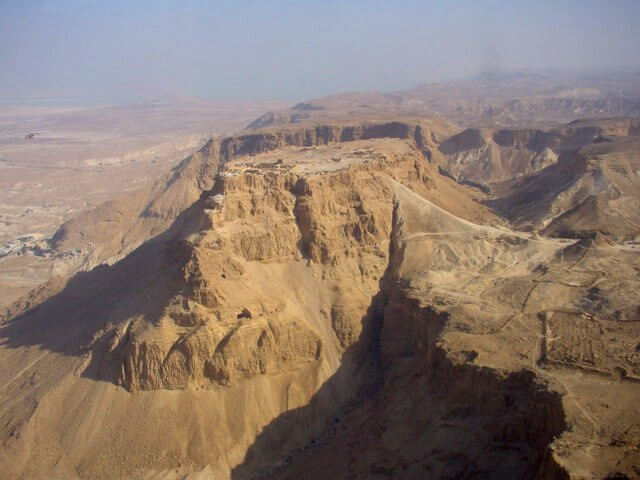In previous studies, the researchers claimed that the Judean Desert region was significantly more humid 2000 years ago; The new study conducted at the University of Haifa refutes the claim and states: when the Romans arrived at Masada, they encountered a desert and arid area without trees*

The Roman legion that besieged Masada about 2000 years ago used for the needs of the siege trees that came from other regions of the country and not from local trees, as researchers have suggested so far, according to a new study conducted at the University of Haifa. The researchers' conclusion refutes the claim that the Judean Desert area was more humid during the Second Temple period.
Despite the large amount of historical and archaeological information that exists today about the Roman siege of Masada, researchers disagree about the source of the large amount of wood that was needed by both the Jewish and Roman garrisons. From previous tests carried out on the remains of the trees found on the site by researchers from the Weizmann Institute, it emerged that the trees at the site grew in a much more humid area - the researchers, who believed that the origin of the tree was local, claimed that this was proof that the area was more humid about 2000 years ago. Haifa University researchers who disagree with this claim argued that the wood was more humid because it was not local but was brought by the Roman army's supply system from a more humid area.
The new study, which was conducted by Prof. Simcha Lev-Yadon from the Department of Biology and Environment of the University of Haifa in Oranim, Prof. Mina Evron from the Zinman Institute of Archeology of the University of Haifa and the student D. S. Lucas from the Ohio University, included botanical, archaeological and cultural methods and was tested by comparison with equivalents in societies The consumption of wood has been traditional since the beginning of the settlement in Masada, about 220 years before the siege.
First, the researchers examined the amount of trees that exist today in the Judean Desert area and in the mouths of the streams near Masada in order to estimate the amount and type of trees that the desert can provide. They then calculated the wood consumption of Masada residents, from 150 BC, when the place was used as a small fortress, through the Herodian period, when Masada as we know it was built, to the siege, which ended in 73 AD. According to the researchers, the main consumption of wood in the ancient period was for fire purposes - for heating, cooking, heating, etc. According to accepted values for the consumption of wood for fire in ancient societies, in accordance with the number of inhabitants that were in each period and taking into account the harsh climatic conditions in the desert and the topography of Masada, the researchers came to the conclusion that when the Romans arrived at Masada and began their siege in 72 AD, the entire area was almost completely emptied of trees due to the massive exploitation of the environment and therefore they had no choice but to bring wood with them from other places - both for building the siege machines and the siege battery and for basic living needs.
The researchers built a model of the consumption of wood by the Roman legion in various siege scenarios and came to the conclusion that even if an area on Masada had maintained its normal amount of wood, it would not have been sufficient for the needs of the Romans - so in any case, the Romans had to take care of a regular supply of wood. Therefore, the researchers said, the claim that Masada's area was more humid about 2000 years ago is also probably not sufficiently substantiated.

One response
A court won't help..a Roman army of this size had to include trailers of supplies after it..even today it was a challenge to provide such a force with water and food equipment...where did it come from?
Maybe it wasn't exactly a jungle back then...but certainly not arid and waterless like today.